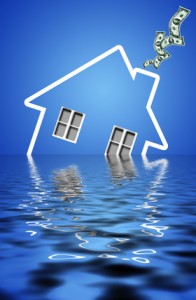 When it comes to sweet mortgage deals, if you are hunting for a brand new home, chances are they are diminishing in numbers, albeit slowly. The U.S. Commerce Department said Tuesday that new housing starts slid 1.5 percent in July to an annualized rate of 604,000 units, compared with 613,000 the previous month. It’s a trend that’s here to stay. Building permits, a measure for future construction, also dived. Permits decreased to 597,000 on an annualized basis.
When it comes to sweet mortgage deals, if you are hunting for a brand new home, chances are they are diminishing in numbers, albeit slowly. The U.S. Commerce Department said Tuesday that new housing starts slid 1.5 percent in July to an annualized rate of 604,000 units, compared with 613,000 the previous month. It’s a trend that’s here to stay. Building permits, a measure for future construction, also dived. Permits decreased to 597,000 on an annualized basis.
With consumer confidence shaky, unemployment on the rise and an abundance of foreclosures and attractively priced inventory in the market, analysts are predicting that construction of single family homes would hover at 600,000 units on an annualized basis. Construction of single-family homes slipped 4.9 percent in July compared to June. While new family homes are on the decline, there’s been a rise in construction of buildings with five units or more. Such units saw an increase of 6.3 percent in July. So, apartments are in big time. If you are looking to rent, you probably will have lot more options.
What this means for home sales?
The housing market continues to be distraught. Homebuilder sentiment measured at 15 in August, according to a report on nuwireinvestor.com. That’s pretty bleak considering anything below 50 signals poor prospects for buying or building for the next six months. Inaccurate appraisal values, oversupply of homes on sale and tight lending practices are contributing to potential homeowners shying away from betting on a new home. On Wednesday, the Wall Street Journal quoted President Obama in an Illinois town-hall meeting saying he expects the market to slowly rebound over the next two years as the overall economy recovers from the recession. Like we said earlier, the good news for buyers, sellers, builders and realtors® is that the government is taking the housing situation pretty seriously. So, stay tuned for lucrative incentives for buyers.
Existing home sales plunged in July
The National Association of Realtors® said Thursday that sales of previously occupied homes dropped 3.5 percent last month to a seasonally adjusted rate of 4.67 million homes. That’s very low considering that economists look for around 6 million homes as a sign that the housing market is healthy. The numbers have sparked fears of another recession. There could be a number of reasons for the bleak data. Of course, there are the usual suspects: unemployment, tight lending practices, a nightmare of an economy. But one of the reasons also could be the lack of desirable homes to buy. Many homeowners are holding on to their property, waiting for the market to pick up before cashing in on their investment.
And this year’s pace is lagging behind last year’s total sales. The 4.91 million last year were the weakest sales figures in 13 years. So, is nobody taking advantage of the low mortgage rates and falling prices? According to an Associated Press report, “wealthy buyers are still purchasing homes priced at more than $1 million in the affluent Northeast and growing Midwest.” There are also investors gathering up dirt-cheap properties in the badly-hit areas of South and West. If you are looking to invest, definitely scour markets such as Tuscon and Tampa.
What kind of homes are available in the market? Mostly foreclosures and short sales. If you don’t want to pursue foreclosed properties, and you are still looking for a deal, definitely don’t cross out existing homes. The median price of a new home is more than 30 percent higher than the median price of a resold home. And U.S. home prices will keep dropping by at least 5 percent through the rest of the year, according to the Associated Press.
Buy a home now or rent?
If you’re wondering whether to buy a home now or rent, buying may be cheaper than renting in some cities. While the average home price is falling, there’s a big demand for rentals. Monthly rents are more expensive than mortgage payments in many U.S. cities, according to data compiled by Trulia. They found that in July it was cheaper to buy a home than rent in 74 percent of the 50 biggest cities.
